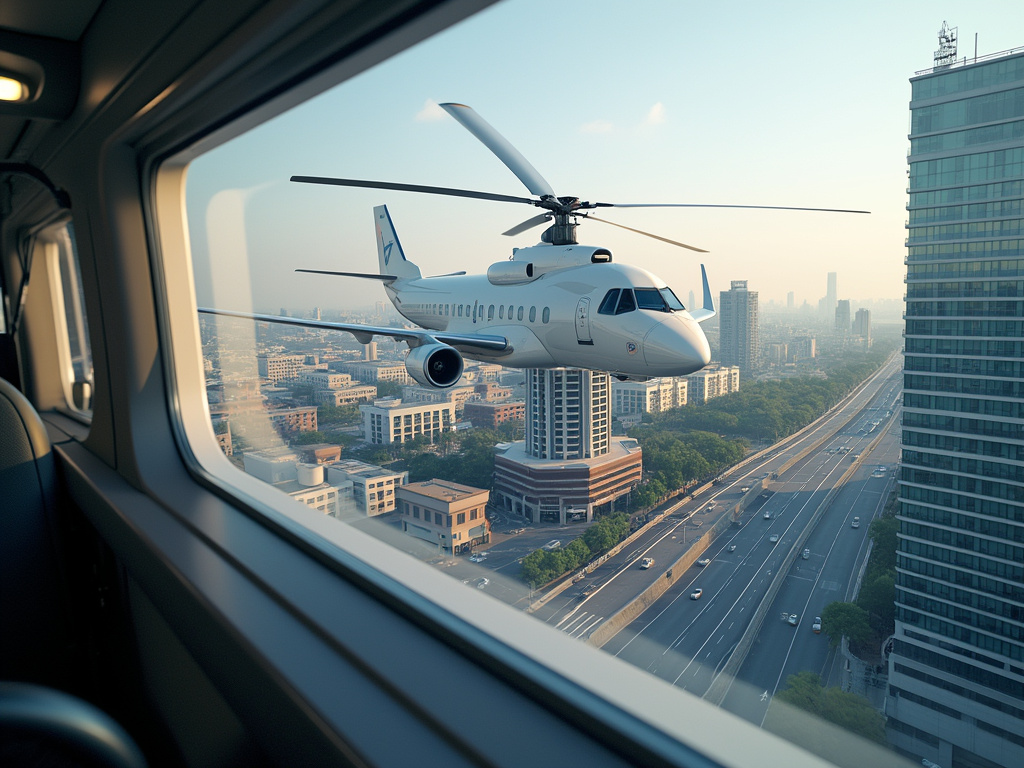The emergence of flying taxis and urban air mobility is set to transform city transportation. Advanced Air Mobility (AAM) and electric Vertical Take-Off and Landing (eVTOL) aircraft are paving the way for a future where commuters can soar above traffic congestion and reach their destinations faster than ever before.
Key Takeaways:
- eVTOL aircraft offer vertical take-off and landing capabilities with electric power
- Flying taxis could significantly reduce urban traffic congestion and commute times
- The FAA's “Innovate28” plan aims for AAM operations at scale by 2028
- Urban air mobility has applications in healthcare and emergency response
- Safety, regulation, and infrastructure development are crucial challenges for the industry
The Future of Urban Transportation: eVTOL Aircraft
Advanced Air Mobility (AAM) is revolutionizing urban transport with electric Vertical Take-Off and Landing (eVTOL) technology. These aircraft combine the best features of helicopters and planes, offering vertical lift capabilities with the efficiency of fixed-wing flight. eVTOLs are characterized by their electric propulsion systems and high levels of automation.
Compared to traditional helicopters, eVTOLs boast impressive advantages. They're significantly quieter, with a 20-25 decibel noise reduction, and produce zero or low emissions. Safety is a top priority, with multiple propellers providing redundancy in case of failure. The Federal Aviation Administration (FAA) is actively working towards integrating these aircraft into our skies, with their “Innovate28” plan aiming for full-scale AAM operations by 2028.
Revolutionizing City Travel and Beyond
The potential applications for urban air mobility extend far beyond simply whisking commuters over traffic jams. While faster commutes and airport transfers are certainly appealing, the benefits reach into critical sectors like healthcare and emergency response. Imagine rapid patient transportation or swift delivery of medical supplies to hard-to-reach areas.
In disaster scenarios, these aircraft could prove invaluable for search and rescue operations, firefighting, and delivering aid to affected regions. They also hold promise for connecting remote locations, potentially transforming logistics networks and boosting economic development in isolated areas.
The economic impact of this new industry could be substantial. It's poised to create thousands of new jobs, from pilots and maintenance technicians to vertiport operators and air traffic controllers. Additionally, the lower operating costs of electric aircraft could make air taxi services more accessible to a broader range of consumers.
Safety, Regulation, and Infrastructure
The FAA faces the complex task of integrating AAM into the National Airspace System. This includes updating air carrier definitions for powered-lift operations, as seen in their July 2023 update. Noise regulations are another crucial aspect, with ongoing assessments to ensure these aircraft don't disrupt urban environments.
Infrastructure development is key to the success of urban air mobility. Vertiports, the takeoff and landing sites for eVTOLs, require careful design and planning. These could be located on rooftops, at ground level, or integrated into existing transportation hubs. The FAA is working on standardizing vertiport designs to ensure safety and efficiency.
To manage the increased air traffic, new algorithmic solutions are being developed. These will optimize routing and scheduling, ensuring smooth operations as the number of flying taxis increases. The goal is to create a system that's as reliable and efficient as ground-based public transportation.
Environmental Impact and Future Prospects
One of the most compelling arguments for urban air mobility is its potential environmental benefits. With zero or low carbon emissions, eVTOLs could play a significant role in reducing the transportation sector's carbon footprint. However, challenges remain, particularly in terms of battery efficiency and range.
The World Economic Forum's AVIATE initiative is working to address these challenges and promote sustainable aviation. This collaborative effort brings together industry leaders, policymakers, and innovators to shape the future of air mobility.
Partnerships between air taxi startups and established aviation companies are accelerating development in the field. These collaborations combine innovative technology with decades of aerospace expertise, potentially bringing flying taxis to our cities sooner than we might think.
As we look to the future, the prospect of thousands of new jobs and significant economic growth makes urban air mobility an exciting frontier. While challenges remain, the potential benefits to our cities, environment, and quality of life make this a technology worth watching closely.
Sources:
Federal Aviation Administration
World Economic Forum
Lambert
TechXplore
Off the Kuff






